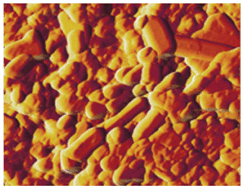The use of aluminium nitride in solid-state optoelectronic devices has been hindered by high defect levels limiting the output power, efficiency and lifetimes of mid-UV LEDs. Now, there is a possible solution, thanks to the method described in this HOT CrystEngComm paper.
R. Radhakrishnan Sumathi from Ludwig Maximilians University reports a physical vapour transport growth method using silicon carbide as a foreign substrate. The result is a more homogeneous structure than afforded by previous methods with uniform levels of defects and impurities across the wafer.
Read more now…
Bulk AlN single crystal growth on foreign substrate and preparation of free-standing native seeds
R. Radhakrishnan Sumathi
CrystEngComm, 2013
DOI: 10.1039/C2CE26599K
Are you following us on Twitter? @crystengcomm












